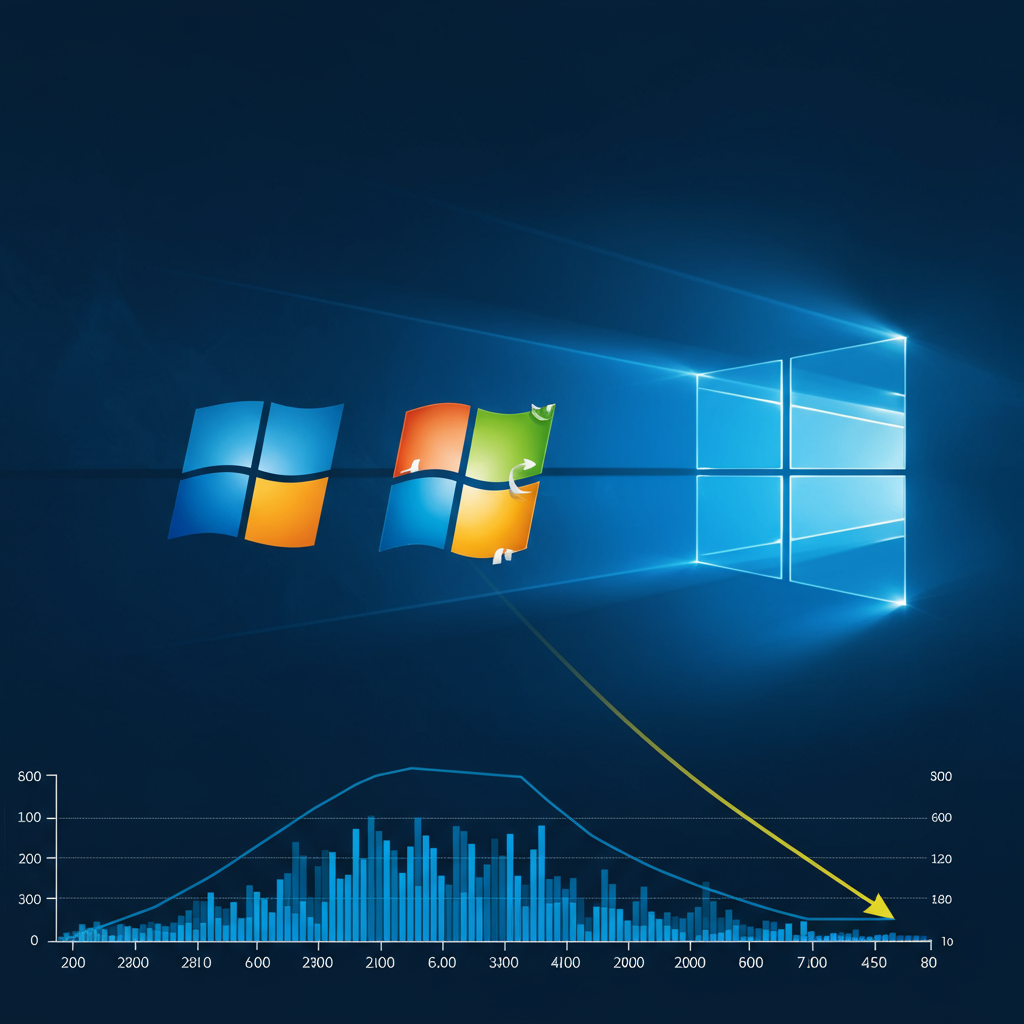The audio landscape for content creators just got a significant upgrade. The DJI Mic 3 emerges as a game-changer, setting an unprecedented standard for premium wireless microphones. Released barely 18 months after its acclaimed predecessor, the Mic 2, this new iteration delivers compelling reasons for an immediate upgrade. It masterfully combines the best attributes of both the Mic 2 and the ultra-compact Mic Mini, all while offering a more competitive launch price. From enhanced battery life and noise cancellation to expanded storage and transmission range, the Mic 3 introduces a suite of improvements designed to elevate your audio capture.
Beyond these core enhancements, new features like timecode support, intuitive voice tone presets, and lossless recording capability arrive. Couple this with a remarkably smaller, lighter transmitter design, and you have a powerhouse wireless microphone system. For professional content creators, vloggers, and filmmakers demanding pristine audio, the DJI Mic 3 isn’t just an option—it’s quickly becoming the essential choice.
A Breakthrough in Design and Portability
The DJI Mic 3 immediately impresses with its refined physical design. The transmitter (TX) units are notably smaller and lighter than the Mic 2, weighing a mere 16g. This makes them significantly more discreet and comfortable to wear, even on lightweight clothing. Integrated magnets allow for secure attachment to metal surfaces, offering versatile placement options. Furthermore, the clips now allow for TX orientation adjustment, ensuring the microphone grille consistently points towards the sound source for optimal capture.
The receiver (RX) unit retains its bright, crisp 1.1-inch AMOLED touchscreen. This display provides instant access to settings and controls. A welcome addition is the locking TRS output, securing your connection to cameras. This simple yet effective feature prevents accidental disconnections during dynamic shoots. The RX unit’s modular design supports USB-C or Lightning adapters, ensuring broad compatibility with cameras, computers, and smartphones.
Smart Charging Case: Efficiency Redefined
Perhaps one of the most practical design improvements lies in the charging case. Despite its compact footprint, the Mic 3’s case boasts vastly improved space utilization. It comfortably accommodates two TX units, one RX unit, and essential accessories like clips, magnets, and furry windscreens. This solves a common frustration experienced by Mic 2 users, who often found their windscreens wouldn’t fit, requiring separate storage. The ability to keep all critical components together and protected simplifies workflow and ensures you’re always ready to record.
Unrivaled Audio Performance and Professional Capabilities
At its core, the DJI Mic 3 builds upon the strong audio foundation of the Mic 2, but with significant enhancements. It continues to offer 32-bit float recording, a crucial feature for professionals. This provides an immense dynamic range, virtually eliminating audio clipping and offering unparalleled flexibility in post-production. For everyday use, robust 24-bit recording with adjustable gain ensures excellent sound quality. The system also supports lossless 24-bit audio transmission from the TX to the RX, preserving every detail.
Advanced Noise Cancellation and Gain Control
One of the standout performance upgrades is the introduction of two levels of active noise cancellation. This offers more granular control than the Mic 2’s single on/off option, allowing creators to adapt to various recording environments. In testing, the noise cancellation proved highly effective, minimizing background distractions without overly distorting vocal recordings.
The new dual-mode Adaptive Gain Control further refines audio capture. The “Automatic” setting prevents audio clipping during unexpected volume spikes, making it ideal for unpredictable outdoor environments or dynamic interviews. The “Dynamic” setting is tailored for more controlled, two-person recordings using a single TX unit, perfect for studio setups or focused conversations. These intelligent features ensure balanced, clear audio in diverse scenarios.
Elevating Voice and Production Workflow
The DJI Mic 3 introduces three new voice tone presets. These allow for instant coloration of vocal recordings, providing options for richer, brighter, or more natural sounds directly from the mic. This saves valuable time in post-production, giving creators more polished audio right out of the gate.
For serious productions, the Mic 3 brings critical professional features to the forefront. It now supports timecode synchronization, a feature absent in the Mic 2. This streamlines multi-camera and multi-audio source editing workflows, saving hours in post-production. DJI also claims support for 4TX+8RX group recording, enabling clear voice capture from larger gatherings, further cementing its professional production credentials.
Extended Range, Unmatched Endurance, and Storage
The wireless transmission capabilities of the DJI Mic 3 have seen a substantial boost. The maximum range has increased from 250m (Mic 2) to an impressive 400m in ideal conditions. This expanded reach provides greater freedom of movement and reliability, especially in challenging environments.
Battery life also receives a major bump. With the charging case and two TX units, the Mic 3 offers up to 28 hours of operating time, a significant improvement over the Mic 2’s 18 hours. While it doesn’t quite match the Mic Mini’s exceptional 48 hours, it provides ample power for all-day shooting. Moreover, the on-board storage on each TX unit has quadrupled from 8GB to a generous 32GB. This allows the TX units to function as completely independent recorders, providing roughly 57 hours of 24-bit recording or 43 hours of 32-bit float, with capacities halved when using dual-file recording. This internal storage acts as a crucial safety net and offers immense recording flexibility.
Pricing, Availability, and Value Proposition
The DJI Mic 3 offers remarkable value, launching at a price point that is, surprisingly, lower than the Mic 2 at its debut. A complete package including two TX units, one RX, a charging case, and essential accessories is priced competitively at £259 / AU$569. A simpler one TX and one RX package is available for £169 / AU$369. DJI also provides the flexibility to purchase individual components and new accessories like a Lightning adapter, allowing users to customize their setup as needed.
US Availability: A Notable Hurdle
Despite its global launch (August 28, 2025), there’s a significant caveat for US-based customers. As with other recent DJI products, the DJI Mic 3 is not officially available in the US at launch. DJI attributes this to “evolving market conditions” and “uncertainty surrounding tariffs.” While DJI maintains its commitment to the US market, no timeline for official introduction has been provided. US consumers may still be able to acquire the Mic 3 through third-party stockists, making it worthwhile to check with major camera retailers.
How the DJI Mic 3 Stacks Up Against the Competition
The DJI Mic 3 truly shines when compared to its predecessors and market rivals.
DJI Mic 3 vs. DJI Mic 2: The Clear Winner
The Mic 3 emerges as the undisputed champion over the Mic 2. Its transmitters are considerably smaller and lighter, yet offer substantially more on-board storage (32GB vs. 8GB). The Mic 3 provides significantly better battery life (28 hours vs. 18 hours) and an extended wireless range (400m vs. 250m). Crucially, the Mic 3’s charging case design is vastly superior, accommodating windscreens. It also adds professional features like timecode support and multi-camera group recording. The Mic 2’s only notable advantage is its 3.5mm lavalier input on the TX, which the Mic 3 omits. For anyone considering an upgrade, the Mic 3 presents a compelling and feature-rich proposition.
Alternatives for Specific Needs
DJI Mic Mini: For budget-conscious creators prioritizing ultra-compact size and maximum battery life (up to 48 hours), the Mic Mini remains an excellent choice, though it sacrifices some advanced features and 32-bit float recording.
Saramonic Ultra: Previously a top pick for professional-quality audio at a lower price than the Mic 2, the Mic 3’s competitive pricing now largely diminishes the Ultra’s unique selling point.
Rode Wireless GO (Gen 3) / Wireless Pro: Rode offers strong alternatives with professional-grade sound. The Wireless Pro, in particular, offers 32-bit float and timecode, similar to the Mic 3. The choice often comes down to form factor, ecosystem preference, and specific feature nuances.
Sennheiser Profile Wireless: This system offers robust 24-bit audio, a unique charging bar that doubles as a handheld interview mic, and a secure screw-fit lavalier input. While it lacks 32-bit float and active noise cancellation, its focus on simplicity, reliability (with an automatic backup recording mode), and a versatile charging case makes it appealing for users who prioritize fuss-free operation and robust backups.
Minor Trade-offs to Consider
Despite its numerous advancements, the DJI Mic 3 isn’t without a few minor compromises:
No Lav Input on TX: The absence of a 3.5mm input on the TX units means you cannot connect a separate lavalier microphone for more discreet, hidden mic setups.
Safety Track Recording: The dedicated Safety Track recording mode, present in previous models, has been dropped. However, 32-bit float recording largely mitigates the need for this.
Smartphone Bulk: For smartphone-only creators, the RX unit, while compact, can still add a little bulk to your handset’s profile compared to ultra-minimalist phone-centric mics.
Who Should Buy the DJI Mic 3?
The DJI Mic 3 is designed for a broad spectrum of creators seeking a premium, versatile, and reliable wireless audio solution:
Professional Content Creators: YouTubers, podcasters, and online educators who demand pristine audio quality, advanced features like 32-bit float and timecode, and extended battery life.
Filmmakers and Documentarians: Those working on multi-camera productions will benefit immensely from timecode synchronization and the potential for group recording.
Vloggers and Journalists: The compact, lightweight TX units and excellent noise cancellation make it ideal for on-the-go recording in diverse environments.
Existing DJI Mic 2 Users: The significant improvements in size, storage, battery, range, and the charging case make it a compelling upgrade, particularly given its competitive price.
Anyone Prioritizing Discretion and Portability: The smaller TX units are easier to conceal and wear comfortably for extended periods.
Frequently Asked Questions
What are the key improvements of the DJI Mic 3 over the Mic 2?
The DJI Mic 3 introduces several significant upgrades over its predecessor. It features smaller, lighter transmitter (TX) units, quadrupled internal storage from 8GB to 32GB, and a superior charging case that now accommodates windscreens. Battery life with the case is extended from 18 to 28 hours, and the wireless transmission range boosts from 250m to 400m. New functionalities include two levels of active noise cancellation (up from one), dual-mode Adaptive Gain Control, voice tone presets, and critical timecode support for professional productions. These enhancements make the Mic 3 a considerably more versatile and powerful system.
Is the DJI Mic 3 a good value for professional content creators, especially given its price?
Absolutely. The DJI Mic 3 offers exceptional value for professional content creators. Despite its extensive list of advanced features—including 32-bit float recording, enhanced noise cancellation, timecode, and significantly improved range and battery life—it launched at a price point lower than the DJI Mic 2. Its robust capabilities, flexible buying options (kits or individual components), and superior design elements position it as a class leader. For professionals needing a reliable, high-quality, and versatile wireless microphone system, the Mic 3’s feature set and competitive pricing make it an outstanding investment.
Why is the DJI Mic 3 not officially available in the US at launch, and are there alternative ways to purchase it?
The DJI Mic 3 is not officially launched in the US due to “evolving market conditions” and “uncertainty surrounding tariffs,” according to DJI. While the company has expressed commitment to the US market, no specific timeline for its official release has been provided. For US-based consumers eager to acquire the Mic 3, checking with third-party stockists and specialized camera stores like B&H might yield purchasing options. These retailers often source products globally, potentially offering a route to obtain the device despite the lack of official US distribution from DJI directly.
The Verdict: A New Era for Wireless Audio
The DJI Mic 3 doesn’t just improve upon its predecessor; it redefines expectations for what a premium wireless microphone system can achieve. By meticulously addressing user feedback and integrating cutting-edge technology, DJI has created a product that delivers unparalleled audio quality, robust performance, and exceptional versatility. Its smaller footprint, enhanced features, and impressive endurance make it a compelling choice for any content creator, from ambitious vloggers to seasoned filmmakers.
Whether you’re upgrading from an older system or investing in your first premium wireless microphone, the DJI Mic 3 offers a comprehensive and future-proof solution. It’s not just an incremental update; it’s a testament to innovation, firmly establishing itself as the ultimate tool for capturing professional-grade audio with ease and confidence.




